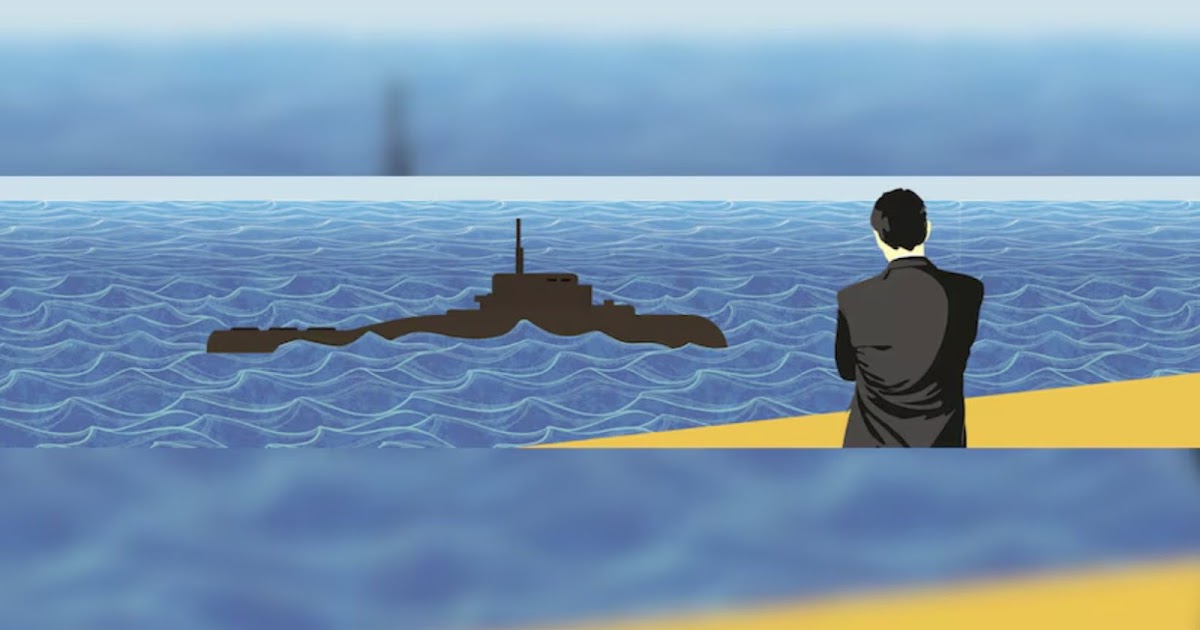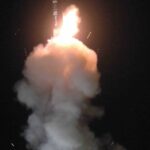
Capability asymmetries between India and the US impede joint training
By Vikas Gupta
Defence News of India, 7th June 24
The four-nation Quadrilateral Security Dialogue (the Quad) and its military manifestation – Exercise Malabar – have achieved only partial success in deterring China’s growing aggression in the Indo-Pacific maritime theatre. To step up pressure on Beijing, the US moved purposefully in September 2021 to persuade its two most steadfast and capable regional allies to join a grouping called AUKUS (Australia – United Kingdom – United States). AUKUS flashed its fangs immediately, announcing its support for Australia to acquire a conventionally armed, nuclear-powered submarine fleet. AUKUS was to have two pillars: Pillar 1 involved the unprecedented transfer of nuclear submarine propulsion technology (without nuclear weaponry) to Australia. Meanwhile, Pillar 2 focused on cooperation in eight military, high-technology domains: the realms of artificial intelligence (AI), quantum technologies, innovation, information sharing, and cyber, undersea, hypersonic and counter-hypersonic and electronic warfare.
Last fortnight, in another step that pointed to close operational coordination, the AUKUS alliance announced that, by the end of the year, its three constituent nations would field a new “trilateral algorithm” that would allow them to share information from P-8 Poseidon sonobuoys – the first tangible AUKUS Pillar 2 technology to hit the field.
All three AUKUS nations track Chinese submarines using the Boeing-manufactured P-8 Poseidon maritime surveillance aircraft; widely regarded as the world’s most capable submarine hunter. The P-8 modus operandi involves dropping sonobuoys into the water to detect and track submarines. Sharing sonobuoy tracking data makes evident the kind of intelligence each country gathers and where its sonobuoys are deployed. Given the centrality of software in modern warfare, it is notable that AUKUS is already delivering software based capabilities through Pillar 2. The US operates 120 P-8 Poseidons, Australia 12, and the UK nine. Sonobuoy information is highly sensitive, even amongst Five Eyes partners (AUKUS countries + Canada + New Zealand). The new algorithm available to all three AUKUS partners would allow them to access and process intelligence data from each other’s sonobuoys, casting its net much wider.
Conspicuous by its omission in the September 2021 announcement is the Indian Navy, which operates 12 P-8 aircraft. But then AUKUS was meant to be an arrangement between very close allies. The US had made a decision to do something that it had never done before – which is to provide nuclear propelled submarines to the Australians. The closest that Washington has come to that earlier was to provide some nuclear technology assistance to the British, many decades ago. No other country, especially India, had ever been offered nuclear submarine technology assistance by the US.
Washington’s break with this strategic tradition clearly suggests that it considers Australian support essential in the event of another Taiwan crisis. But there is no way the US military would regard India as being an essential part of those arrangements. Washington would assume that the Australians and the British would fight alongside US forces. That required the Australian military being equipped with enough high-tech forces and equipment to allow them to punch above their weight, even though their real capabilities would remain modest.
Canberra regards itself as America’s most reliable Asian ally; they have fought together in every American war since World War 1. Its link with the US has been central to Australia’s long-term security. So the question for Washington is: since Australia will certainly come to support us; how best can we strengthen the capabilities they will bring to bear. The answer to this guides the US administration’s bold gamble to build up Australia’s military.
Meanwhile, America’s other potential allies in the Western Pacific have other reservations. Tokyo claims substantial technological capabilities of its own in many Pillar 2 areas, because of which they don’t need the kind of cooperation the Australians require. For Japan, the Chinese question is straightforward: Do they have to join a US military campaign against China? On Pillar 2 issues, the question for the Japanese is: You’ve invited us to join Pillar 2. But are we going to be giving away stuff, or are we going to be getting stuff?
Meanwhile the US and Indian navies continue to cooperate in tracking Chinese submarines. The question is: how substantial is this cooperation? The Indian side apparently has its reservations. Diplomats in Delhi say: India’s reservations are understandable, because, if you were neighbouring China, you would want to avoid doing anything that is manifestly provocative to China. The Chinese have so many cards to play.
The maritime realm offers the Indian Navy many more options for cooperation, given that navies usually operate “out of sight, out of mind”, from the land border. Furthermore, far out at sea, navy-to-navy cooperation is more tacit than explicit. US-India naval cooperation is not yet at the stage of joint training and common drills and communications, such as what the US Navy does with countries such as Norway and Iceland. One reason for this is that capability asymmetries between India and the US impede joint training. A second reason is the Indian wish to avoid the limelight. New Delhi wants joint exercises that are quiet and deniable. Beyond a point, however, these things are neither quiet nor deniable.
What are the lessons here for India? New Delhi will watch from the side-lines enviously as nuclear propelled submarines are handed over to Australia. But there is little the US can do, given that geopolitical cross-currents stand in the way of Washington’s nuclear submarine cooperation with India. From the geo-strategic, economic and technological standpoints, it would perhaps be better for Washington to stand aside and encourage the French to pick up the slack.
Given the submarine and aircraft cooperation between New Delhi and Paris, it would be eminently feasible to conceive of the French stepping in and working with India on the submarine account. French nuclear submarines are reputed to be technologically superb, smaller than ours and, from an operational point of view, more flexible than anything in the Indian fleet. French maritime nuclear technology is regarded as advanced, compared to that of the US. French nuclear submarine reactors, unlike US reactors, use low enriched uranium as fuel, allowing French submarines to satisfy proliferation concerns. And, given the burgeoning strategic relationship between Paris and New Delhi the maritime relationship would best be brought into alignment between the defence, space, economic and cultural relationships, which have grown and continue to grow from strength to strength.
[ENDS]
AUKUS focus: the strategic pivot to France
Capability asymmetries between India and the US impede joint training
By Vikas Gupta
The four-nation Quadrilateral Security Dialogue (the Quad) and its military manifestation – Exercise Malabar – have achieved only partial success in deterring China’s growing aggression in the Indo-Pacific maritime theatre. To step up pressure on Beijing, the US moved purposefully in September 2021 to persuade its two most steadfast and capable regional allies to join a grouping called AUKUS (Australia – United Kingdom – United States). AUKUS flashed its fangs immediately, announcing its support for Australia to acquire a conventionally armed, nuclear-powered submarine fleet. AUKUS was to have two pillars: Pillar 1 involved the unprecedented transfer of nuclear submarine propulsion technology (without nuclear weaponry) to Australia. Meanwhile, Pillar 2 focused on cooperation in eight military, high-technology domains: the realms of artificial intelligence (AI), quantum technologies, innovation, information sharing, and cyber, undersea, hypersonic and counter-hypersonic and electronic warfare.
Last fortnight, in another step that pointed to close operational coordination, the AUKUS alliance announced that, by the end of the year, its three constituent nations would field a new “trilateral algorithm” that would allow them to share information from P-8 Poseidon sonobuoys – the first tangible AUKUS Pillar 2 technology to hit the field.
All three AUKUS nations track Chinese submarines using the Boeing-manufactured P-8 Poseidon maritime surveillance aircraft; widely regarded as the world’s most capable submarine hunter. The P-8 modus operandi involves dropping sonobuoys into the water to detect and track submarines. Sharing sonobuoy tracking data makes evident the kind of intelligence each country gathers and where its sonobuoys are deployed. Given the centrality of software in modern warfare, it is notable that AUKUS is already delivering software based capabilities through Pillar 2. The US operates 120 P-8 Poseidons, Australia 12, and the UK nine. Sonobuoy information is highly sensitive, even amongst Five Eyes partners (AUKUS countries + Canada + New Zealand). The new algorithm available to all three AUKUS partners would allow them to access and process intelligence data from each other’s sonobuoys, casting its net much wider.
Conspicuous by its omission in the September 2021 announcement is the Indian Navy, which operates 12 P-8 aircraft. But then AUKUS was meant to be an arrangement between very close allies. The US had made a decision to do something that it had never done before – which is to provide nuclear propelled submarines to the Australians. The closest that Washington has come to that earlier was to provide some nuclear technology assistance to the British, many decades ago. No other country, especially India, had ever been offered nuclear submarine technology assistance by the US.
Washington’s break with this strategic tradition clearly suggests that it considers Australian support essential in the event of another Taiwan crisis. But there is no way the US military would regard India as being an essential part of those arrangements. Washington would assume that the Australians and the British would fight alongside US forces. That required the Australian military being equipped with enough high-tech forces and equipment to allow them to punch above their weight, even though their real capabilities would remain modest.
Canberra regards itself as America’s most reliable Asian ally; they have fought together in every American war since World War 1. Its link with the US has been central to Australia’s long-term security. So the question for Washington is: since Australia will certainly come to support us; how best can we strengthen the capabilities they will bring to bear. The answer to this guides the US administration’s bold gamble to build up Australia’s military.
Meanwhile, America’s other potential allies in the Western Pacific have other reservations. Tokyo claims substantial technological capabilities of its own in many Pillar 2 areas, because of which they don’t need the kind of cooperation the Australians require. For Japan, the Chinese question is straightforward: Do they have to join a US military campaign against China? On Pillar 2 issues, the question for the Japanese is: You’ve invited us to join Pillar 2. But are we going to be giving away stuff, or are we going to be getting stuff?
Meanwhile the US and Indian navies continue to cooperate in tracking Chinese submarines. The question is: how substantial is this cooperation? The Indian side apparently has its reservations. Diplomats in Delhi say: India’s reservations are understandable, because, if you were neighbouring China, you would want to avoid doing anything that is manifestly provocative to China. The Chinese have so many cards to play.
The maritime realm offers the Indian Navy many more options for cooperation, given that navies usually operate “out of sight, out of mind”, from the land border. Furthermore, far out at sea, navy-to-navy cooperation is more tacit than explicit. US-India naval cooperation is not yet at the stage of joint training and common drills and communications, such as what the US Navy does with countries such as Norway and Iceland. One reason for this is that capability asymmetries between India and the US impede joint training. A second reason is the Indian wish to avoid the limelight. New Delhi wants joint exercises that are quiet and deniable. Beyond a point, however, these things are neither quiet nor deniable.
What are the lessons here for India? New Delhi will watch from the side-lines enviously as nuclear propelled submarines are handed over to Australia. But there is little the US can do, given that geopolitical cross-currents stand in the way of Washington’s nuclear submarine cooperation with India. From the geo-strategic, economic and technological standpoints, it would perhaps be better for Washington to stand aside and encourage the French to pick up the slack.
Given the submarine and aircraft cooperation between New Delhi and Paris, it would be eminently feasible to conceive of the French stepping in and working with India on the submarine account. French nuclear submarines are reputed to be technologically superb, smaller than ours and, from an operational point of view, more flexible than anything in the Indian fleet. French maritime nuclear technology is regarded as advanced, compared to that of the US. French nuclear submarine reactors, unlike US reactors, use low enriched uranium as fuel, allowing French submarines to satisfy proliferation concerns. And, given the burgeoning strategic relationship between Paris and New Delhi the maritime relationship would best be brought into alignment between the defence, space, economic and cultural relationships, which have grown and continue to grow from strength to strength.






